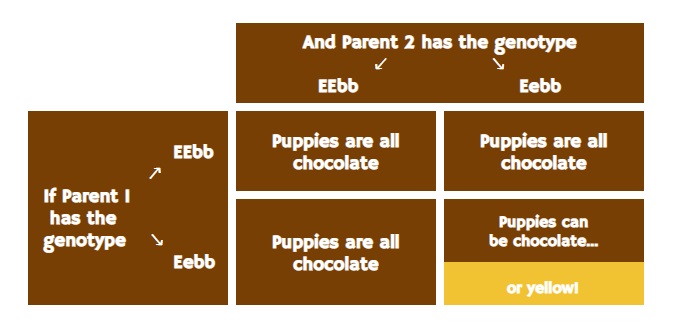Two yellow Labradors mated together will never throw brown or black puppies. All their offspring will be yellow. This is because yellow dogs do not possess the big E gene which is needed to switch off the masking effect.
The Yellow Labrador Retriever is an iconic breed of dog that has been adored by pet owners around the world for its gentle disposition, intelligence, and loving nature. They are also prized for their striking yellow coats and friendly face. But what happens when two yellow labs produce black puppies? While it may seem unlikely, the answer to this question is yes – two yellow labs can indeed produce black puppies. In this blog post, we’ll explore the genetics behind this phenomenon, as well as discuss the potential implications of a yellow lab parent giving birth to a black pup. We’ll also explore the popularity and care of Yellow Labrador Retrievers, and provide some tips for those looking to adopt a puppy. So if you’ve ever wondered if two yellow labs can have black puppies, you’ve come to the right place – read on to find out the answer!
What happens if you breed a black and yellow lab?
Black color genes are dominant over brown. Due to the gene being present in both parents, if two yellow Labs are bred, yellow puppies will result. If you breed a yellow Lab with a brown or black Lab, and the brown or black Lab carries a copy of the yellow gene, you might get some yellow pups in the litter.
Is It Possible to Get All Three Colors from Two Black Dogs?
It can only occur if both parents of the dogs have the genotype EeBb, as shown in the bottom right hand square in the diagram above. In other words, they both contain a small amount of e and b.
Predicting Labrador Retriever Colors in Puppies
It is challenging to predict the colors of Labrador puppies without knowing the genotypes of the parents. As you can see, the fourth dog down the list may appear black, but he may also produce yellow puppies, and the second dog down the list may appear black, but he may actually produce brown puppies. Although the fifth dog down the list is also black, he might have puppies that are yellow and brown. When both parents are carriers of the recessive genes b or e, it is simpler to predict the colors of puppies.
The offspring of two yellow Labradors will never be brown or black. All their offspring will be yellow. This is due to the fact that yellow dogs lack the big E gene, which is required to turn off the masking effect.
Due to the lack of the big B gene in brown dogs, mating two brown Labs will never result in black puppies. However, two chocolate Labs can have yellow puppies if both parents have the little e gene, as in the following example:

According to statistics, in a mixed litter, one half of the puppies will be chocolate and one half will be yellow. When we start examining other color combinations of parents, it becomes even clearer that the rules of probability aren’t the same as guarantees, just like when we toss a coin. Let’s look at a few more examples.
FAQ
Can 2 chocolate labs have black puppies?
Black puppies cannot be born from chocolate Labs because they do not carry the black gene. Two yellow Labs will only produce a yellow litter with yellow puppies because yellow Labs outweigh black and brown colors.
Can 2 White Labs have black puppies?
Dark-colored parents can give birth to Yellow or light-colored puppies. However, they might not have black puppies if they are white or yellow labs. They lack the gene that causes their offspring to be black, which is the cause of this.
What determines Colour of Labrador puppies?
Yellow, black, and chocolate are the three primary colors of a Labrador retriever’s coat. Just like almost all of the characteristics that children inherit from their parents, these colors are determined genetically. These coat colors are inherited via autosomal inheritance, independent of the dog’s gender.
Can labs give birth to different color puppies?
A Labrador has produced a very uncommon litter that includes pure yellow, chocolate, and black puppies. Zola, a 4-year-old black Labrador retriever, gave birth to ten pups that are a mixture of three different colors; they have only been seen on “a handful” of occasions before.